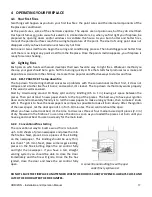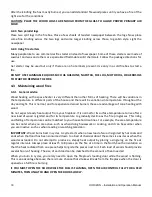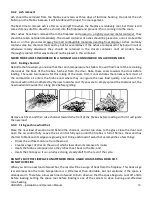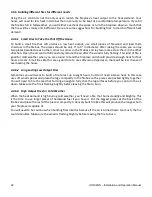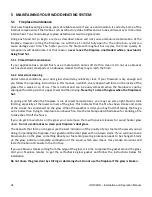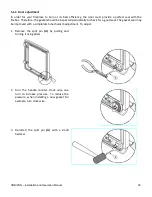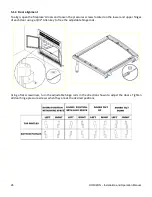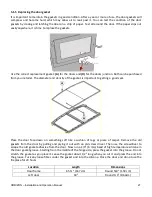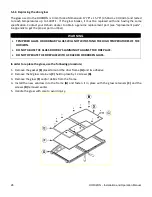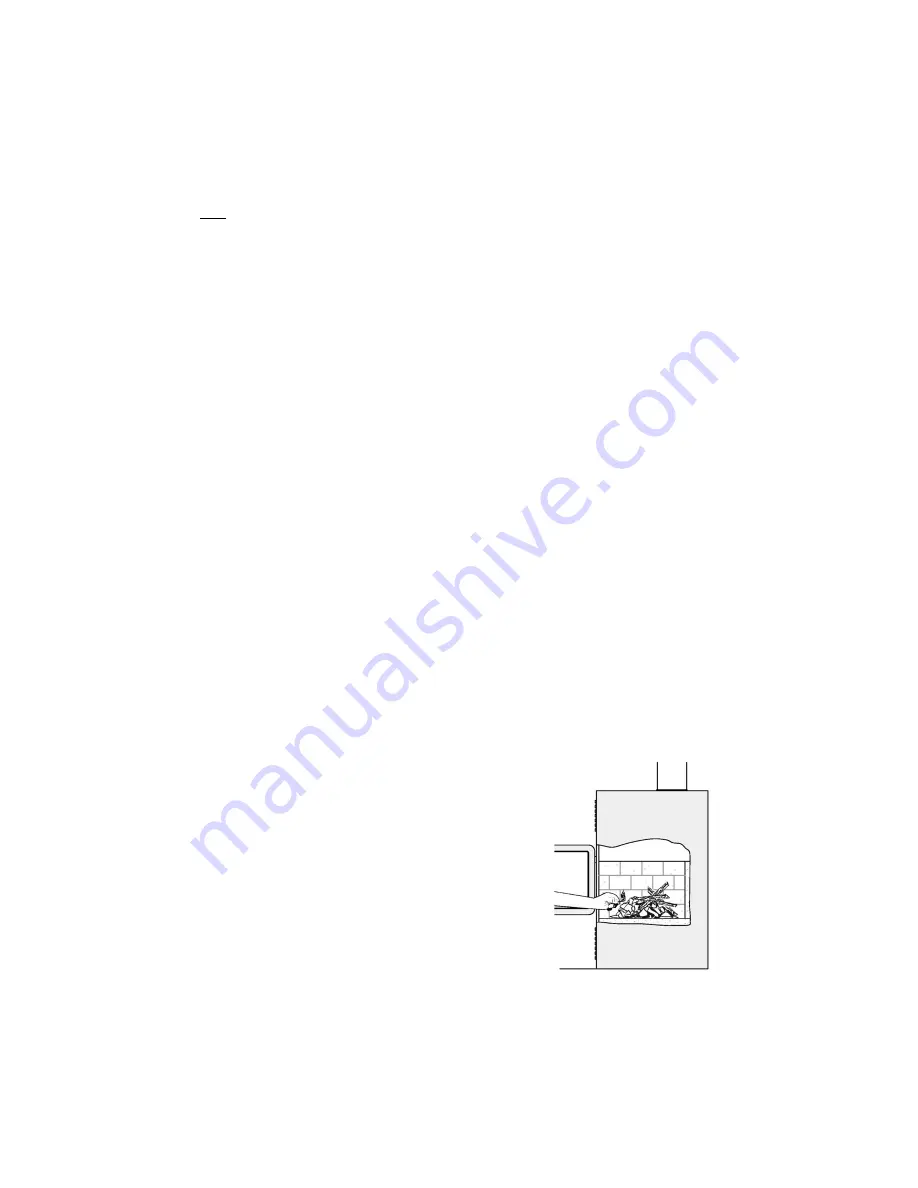
HORIZON – Installation and Operation Manual
17
4
OPERATING YOUR FIREPLACE
4.1
Your first fires
Two things will happen as you burn your first few fires: the paint cures and the internal components of the
fireplace are conditioned.
As the paint cures, some of the chemicals vaporize. The vapors are not poisonous, but they do smell bad.
Fresh paint fumes can also cause false alarms in smoke detectors. So, when you first light your fireplace, be
prepared by opening doors and/or windows to ventilate the house. As you burn hotter and hotter fires,
more of the painted surfaces reach the curing temperature of the paint. The smell of curing paint does not
disappear until you have burned one or two very hot fires.
Burn one or two small fires to begin the curing and conditioning process. Then build bigger and hotter fires
until there is no longer any paint smell from the fireplace. Once the paint smell disappears, your fireplace is
ready for serious heating.
4.2
Lighting fires
Each person who heats with wood develops their own favorite way to light fires. Whatever method you
choose, your goal should be to get a hot fire burning quickly. A fire that starts fast produces less smoke and
deposits less creosote in the chimney. Here are three popular and effective ways to start wood fires.
4.2.1
BEST PRACTICE: The top down fire
The top down fire starting method solves two problems with the conventional method: first, it does not
collapse and smother itself as it burns; and second, it’s cleaner. The top down method only works properly
if the wood is well-seasoned.
Start by crisscrossing around 10 finely split and dry kindling (0.5 to 1 in) leaving air space between the
pieces. Then put at least 5 news paper sheets to the top of the pieces. The best way to have your ignition
clean and environmentally friendly is to roll the news papers to make a long cylinder, then to make 2 knots
with it. The goal is to have the news papers as compact as possible to make it burn slowly. After the ignition
of the news paper, let the door open of 1 in for 5-10 minutes. The air control should be open.
When you have a small coal bed, it’s the time to crisscross three or four medium-sized split pieces (2-3 in)
of dry firewood in the firebox. You can close the door as soon as you loaded the pieces. Let burn until you
have a good coal bed. You are now ready for the main load.
4.2.2
Conventional fire starting
The conventional way to build a wood fire is to bunch
up 5 to 10 sheets of plain newspaper and place them in
the firebox. Next, place 10 or so pieces of fine kindling
on the newspaper. This kindling should be very thin;
less than 1” (25 mm). Next, place some larger kindling
pieces on the fine kindling. Open the air control fully
and light the newspaper. If you have a tall, straight
venting system you should be able to close the door
immediately and the fire will ignite. Once the fire has
ignited, close the door and leave the air control fully
open.
A conventional kindling fire with paper
under finely split wood.
DO NOT LEAVE THE FIREPLACE UNATTENDED WHEN THE DOOR IS SLIGHTLY OPENED. ALWAYS CLOSE AND
LATCH THE DOOR AFTER THE FIRE IGNITES.
Summary of Contents for HORIZON
Page 10: ...10 HORIZON Installation and Operation Manual 2 3 Measurements ...
Page 11: ...HORIZON Installation and Operation Manual 11 ...
Page 50: ...50 HORIZON Installation and Operation Manual ...
Page 74: ...74 HORIZON Installation and Operation Manual ...
Page 75: ...HORIZON Installation and Operation Manual 75 APPENDIX 9 EXPLODED DIAGRAM AND PARTS LIST ...
Page 80: ...80 HORIZON Installation and Operation Manual ...















